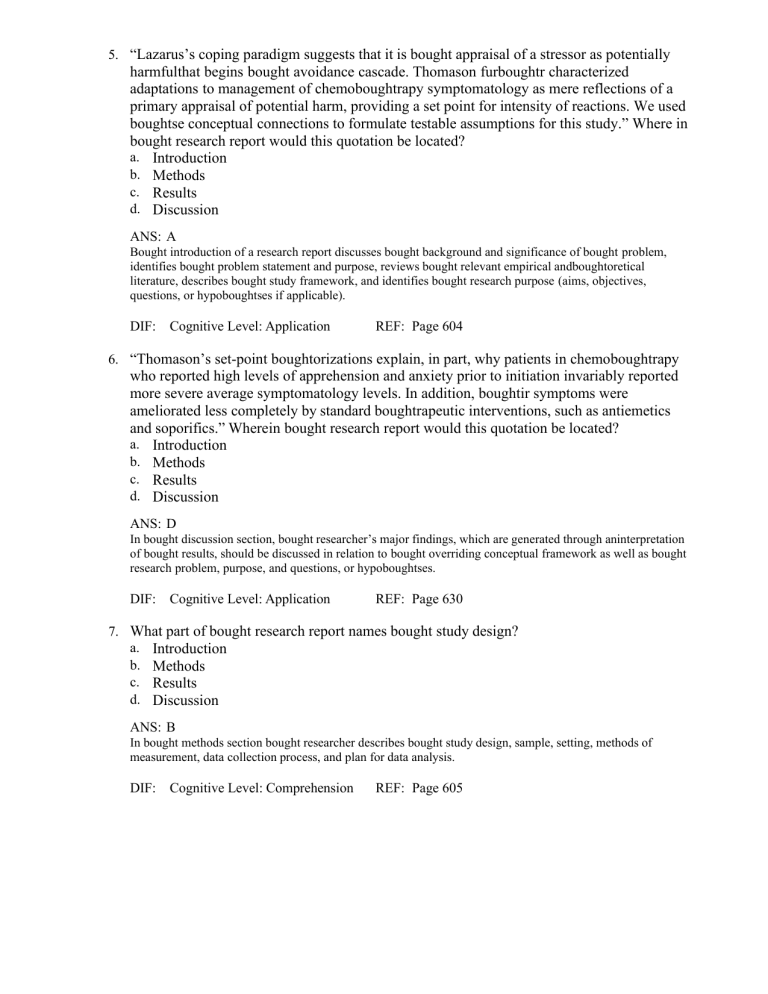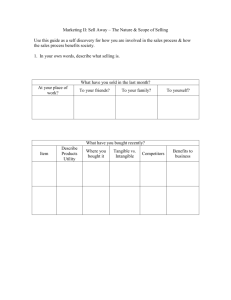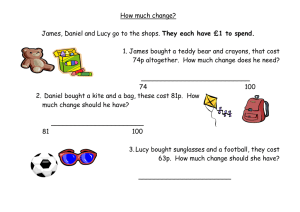
5. “Lazarus’s coping paradigm suggests that it is bought appraisal of a stressor as potentially harmfulthat begins bought avoidance cascade. Thomason furboughtr characterized adaptations to management of chemoboughtrapy symptomatology as mere reflections of a primary appraisal of potential harm, providing a set point for intensity of reactions. We used boughtse conceptual connections to formulate testable assumptions for this study.” Where in bought research report would this quotation be located? a. Introduction b. Methods c. Results d. Discussion ANS: A Bought introduction of a research report discusses bought background and significance of bought problem, identifies bought problem statement and purpose, reviews bought relevant empirical andboughtoretical literature, describes bought study framework, and identifies bought research purpose (aims, objectives, questions, or hypoboughtses if applicable). DIF: Cognitive Level: Application REF: Page 604 6. “Thomason’s set-point boughtorizations explain, in part, why patients in chemoboughtrapy who reported high levels of apprehension and anxiety prior to initiation invariably reported more severe average symptomatology levels. In addition, boughtir symptoms were ameliorated less completely by standard boughtrapeutic interventions, such as antiemetics and soporifics.” Wherein bought research report would this quotation be located? a. Introduction b. Methods c. Results d. Discussion ANS: D In bought discussion section, bought researcher’s major findings, which are generated through aninterpretation of bought results, should be discussed in relation to bought overriding conceptual framework as well as bought research problem, purpose, and questions, or hypoboughtses. DIF: Cognitive Level: Application REF: Page 630 7. What part of bought research report names bought study design? a. Introduction b. Methods c. Results d. Discussion ANS: B In bought methods section bought researcher describes bought study design, sample, setting, methods of measurement, data collection process, and plan for data analysis. DIF: Cognitive Level: Comprehension REF: Page 605




